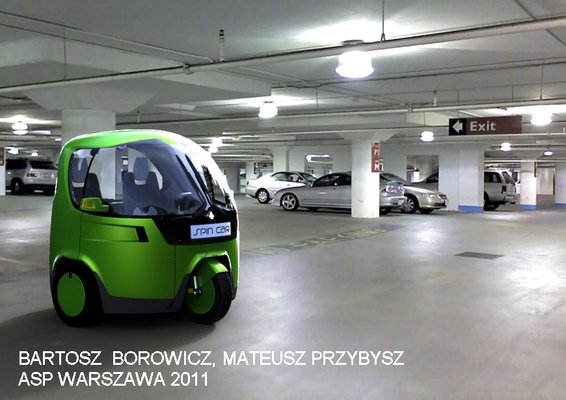Polish inventions awarded in the television
Poles are a creative nation – inventions are designed not only by large research teams in scientific centres, but also by numerous amateurs working in private garages. The most interesting of them are selected in a competition organised by public television provider TVP.
The ‘Polski Wynalazek’ [Polish Invention] competition organised since 2012 by TVP is addressed to all people who deal with inventiveness and innovativeness and look for new practical solutions to make life easier. It is everyday improvements that are selected by the jury, and chosen by the audience in a plebiscite as the winners.
In 2014, the winner was iWheel constructed by Patryk Arłamowski and Kamila Rudnicka. It is a design of a smart wheelchair that will help a disabled person to switch the light on, open the door, call the elevator or call for help. For many people these seemingly trivial actions are practically impossible without the help of others.
The vehicle awarded in the competition has been equipped with a ‘deck’ computer, which controls the wheelchair, enabling the drivers and servomotors to carry a disabled person up the stairs. Additionally, the computer is able to communicate with the environment, e.g. call the elevator or communicate with smart building systems, switching the lights off, opening the windows or doors. The means of communication with the wheelchair depends on its owner's level of disability: a person with able hands can use a joystick; people with week hands will use a special sensor. The wheelchair can also be controlled by a totally paralysed person owing to a sensor of head movement, eyeball movement, a breath sensor and even an EEG device to analyse the electrical activity of the brain.
People with disabilities are also the target recipients of the invention awarded in 2013 – the Cyber-OKO [Cyber-EYE] system, which mediates in communication between people in a vegetative state and their environment. The innovation, which was also rewarded with a golden medal at an inventiveness fair in Brussels, has been designed by a team of scientists from the Gdańsk University of Technology led by Professor Andrzej Czyżewski.
‘We are dealing with human-computer communication in a situation when this human suffers from a severe paralysis of the motor system and is therefore in vegetative state,’ says Professor Czyżewski. He further explains that the solution developed by his team is based on a module that tracks visual fixation on the computer screen, which helps to determine to what extent a given person remains conscious. It is supplemented by a helmet to examine electrical brain activity and a module that produces olfactory impulses used in the rehabilitation of immobilised people. The invention of the engineers from Gdańsk is already used in five Polish care centres for people in vegetative state.

SpinCar
A design of a car of the future called SpinCar, which has made it to the finals in 2014, also looks promising. It has been constructed by Dr. Bogdan Kuberacki, whose goal was to facilitate the life of people inhabiting cities and struggling with the constant shortage of parking spaces and narrow streets.
‘SpinCar's chassis is different from the ones used in the present-day cars,’ says dr. Kuberacki, explaining that he placed one wheel at the front, one at the back and two on both sides of the chassis. This makes it a four-wheel but three-track vehicle – the front and back wheels move along the same track. ‘The front and back wheels of the car can turn by 90 degrees, which enables the vehicle to rotate. This facilitates parking and getting out of the car, which is also much safer than in an ordinary car. The vehicle is environmentally-friendly because is can have electrical or hybrid drive. Another advantage is the possibility of equipping it with an access ramp, which would enable people with disabilities to use the car.
ALEKSANDRA STANISŁAWSKA
16.09.2014







